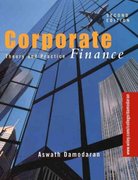After the stock market crash in 1929, the SEC was established to protect investors from fraudulent investments and to regulate the securities industry.
Based on your understanding of SEC regulations, which of the following statements are true? Check all that apply.
Correct Answers:
1) II & IV
2) Less Net Worth: Non-Accredited Investors (inverse: High Net Worth = Accredited Investors)
3) Angel Investor: Peter Thiel (inverse: Venture Capitalist = Accel Partners)


Attention: Due to a bug in Google Chrome, this page may not function correctly. Click here to learn more 1. Financing a start-up company A Aa After the stock market crash in 1929, the Securities and Exchange Commission (SEC) was established to protect investors from fraudulent investments and to regulate the securities industry. Based on your understanding of SEC regulations, which of the following statements are true? Check all that apply. The SEC has jurisdiction over interstate public offerings of any amount. Companies are liable for all of the information presented in the prospectus. The SEC does not allow companies to specify or limit which groups or types of investors to whom a company can issue securities. The SEC requires that all marketing and promotional material be distributed, along with the prospectus, to all prospective investors Explanation Close The prospectus is embedded in Form S-1, the registration statement used when a company registers the sale of its stock to the SEC. The company is liable for the information provided in the prospectus. If an investor faces losses due to misinterpretation or omissions of material facts in the prospectus, the investor can sue the company. The SEC does not prohibit companies from issuing securities to only a certain group of investors. Companies can sell securities to select investors through private placements. Private placements are not registered with the SEC, and the issuing companies sell their stock to a select group of investors. However, there are regulations for private placements, because the SEC restricts the number and the type of investors involved in private placements. An issue of securities offered for sale to the public is called a public offering. The SEC has jurisdiction over interstate public offerings of $1.5 million and above. In most public offerings, investors are classified based on their profiles. Individual investors with relatively less net worth than senior executives, directors, and high-wealth investors are referred to as accredited investors Explanation Close A High-wealth investors, institutional investors, officers, and directors are categorized as accredited investors. Other investors are called nonaccredited investors. In private placements, companies sell their stock to accredited investors. Assignment: Chapter 18 - Initial Public Offerings, Investment Banking, and Financial Restructuring A company has to grow to a certain level before it can successfully raise capital by selling its stock to the public. At different stages, a company has different financing needs; it raises capital by reaching out to different kinds of investors. Consider this case: Mark Zuckerberg started Facebook, a social networking website, in February 2004. He recruited his friends Dustin Moskowitz and Chris Hughes to grow the company. In the summer of 2004, their first investor, Peter Thiel-the cofounder of Paypal--invested $500,000 into Facebook for a 10.2% stake in the company. In late 2004, Facebook was valued at $100 million and received funding of $12.7 million from Accel Partners. Facebook kept growing and received $25 million in funding from Greylock Partners and Meritech Capital. After several acquisition attempts and rounds of funding, Microsoft invested $240 million into Facebook for 1.6% of the company in October 2007 Based on your understanding of investors in different stages of a start-up's financial cycle, which of the following companies or individuals would be referred to as an angel investor? Dustin Moskowitz Meritech Capital Peter Thiel Accel Partners Explanation: Close A Financing provided by wealthy individuals for business start-ups, usually in exchange for a certain rate of return or equity ownership, is referred to as angel investment, and the individuals who provide these funds are called angel Investors. Most start-up companies receive their first round of external financing from angel investors, who bring experience, direction, and industry contacts along with funding. In the case of Facebook, Peter Thiel (the cofounder of PayPal) was one of the first investors in the company. He invested $500,000 for a 10.2% stake in the company. Thus, Peter Thiel was an angel investor. As start-up firms grow, their financing needs increase, and they seek out venture capital funds. A venture capital fund is a private limited partnership that brings in investments from institutional investors, such as pension funds, endowments, and corporations, Venture capital funds invest in companies that are showing operating success, growth, and the potential to grow further. The managers of venture capital funds are called venture capitalists (VCs). They bring industry experience to the board of directors and buy a certain stake in the company, Accel Partners, Greylock Partners, and Meritech Capital invested in Facebook after the company proved its potential to grow under the leadership of its founders and the guidance of angel investors. Thus, these companies provided venture capital, and their managers were venture capitalists, Venture capital funds specialize in certain sectors. They provide funding and buy a stake in companies that meet their criteria. The companies that VC firms invest in are called portfolio companies. Vcs dissolve their stake in the company by selling the company's stock. Source: Crunchbase. Crunchbase, Facebook, n.d. Web. 22 June 2010.








